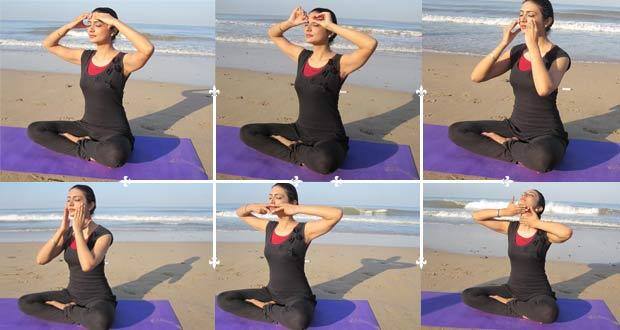>Banana
How do they help?
- They are a rich source of potassium and help keep the level of acid production in your stomach in check.
- Certain components in the fruit also help increase the production of mucous in your stomach, which helps protect it from the harmful effects of excessive acid production.
- Are high in fibre content which helps speed up digestion, preventing the recurrence of acidity. ]
Tip for relief
Eat a ripe banana for some relief. You could also eat an overripe banana to beat an especially bad bout of acidity, as they tend to contain more potassium which makes it the perfect antidote.
> Tulsi
How does it help?
- Tulsi leaves help stimulate your stomach to produce more mucous
- Has antiulcer properties and reduces the effect of gastric acids,
Tip for relief
Chewing on five to six tulsi leaves when you suffer from acidity is a great way to beat the discomfort you feel.
> Cold milk
How does it help?
- Milk has a high amount of calcium that helps it prevent acid build up and absorbs the excess acid produced, thereby reducing the symptoms of acidity.
- The fact that it is cold also provides instant relief from the burning sensation one feels during acid reflux.
Tip for relief
It is essential that you have the milk cold and without any additives like sugar. You could even mix it with a spoon of ghee to make the remedy even more effective.
> Saunf or aniseed
How does it help?
- Has very potent anti-ulcer properties (due to the volatile oils it contains)
- Aids in digestion and relieves constipation.
- Helps cool the lining of the stomach, reducing that burning sensation you feel during a bout of acidity.
Tip for relief
While simply chewing on a few saunf seeds can help reduce the symptoms of acidity, as a long term remedy, boil a few seeds in water and leave overnight, drink this water during the day when you feel uneasy.
> Jeera
How it helps
- It has properties that stimulate the production of saliva which helps in better digestion, improves metabolism and relieves gas and other gastric troubles.
- According to Ayurvedic doctors jeera has a calming effect on irritated stomach nerves and helps heal ulcers.
Tip for relief
You can chew a few seeds of jeera to relieve acidity or boil it in water and drink the solution when it has cooled down
> Clove
How it helps
- When bitten into your taste buds react cloves pungent taste and secrete excess saliva, which in turn aids digestion and beats the symptoms of acidity.
- Has carmitive properties and helps improve peristalisis (the movement of food down the stomach).
Tip for relief
In case you’re suffering from acidity, bite a clove once so that the juice is released and then keep it in the mouth. The slowly released juice will immediately lower acid reflux and give you some relief. Cloves can also help relieve a sore throat.
> Elaichi
How it helps
- Known to balances all three doshas – kapha, pitta and vataaccording to Ayurvedic texts, elaichi is known to stimulate digestion and relieve stomach spasms.
- It also soothes the inner lining of the stomach helping it ward off the effects of excess acid produced in the stomach.
Tip for relief
To relieve acidity crush two pods of cardamom (with or without the skin), boil the powder in water and drink the cooled juice for instant relief.
> Mint Leaves
How it helps
- Pudina helpslower the acid content of the stomach and improves digestion.
- Has a cooling effect which helps reduce the pain and burning associated with acid reflux.
Tip for relief
If you feel an attack coming on chop some mint leaves, add them to a pot of boiling water and drink this water after it cools.
> Ginger
How it helps
- The root is known to improve digestion and aid in better absorption and assimilation of essential nutrients.
- It also protect your stomach against ulcers by promoting mucus secretion and reducing the effect of the acid on your stomach.
Tip for relief
For relief from acidity, chew a small piece of ginger. If you find that too pungent, try boiling it in water and drinking the decoction. Another remedy is to crush ginger, mix it with a small piece of jaggery and keeping sucking on it allowing the juice to slowly reach the stomach.
> Amla
How it helps
- Amla is a kapha and pitta pacifier apart from having high amounts of vitamin C that helps in healing the injured stomach lining and oesophagus.
Tip for relief
Have one teaspoon of amla powder twice a day to help keep acidity at bay.
So the next time you feel like you might suffer from a bout of acidity, ditch that bottle of antacid, and try some effective home remedies instead, after all they’ve been around for centuries.
 Yoni Mudra – Detachment from chaos:
Yoni Mudra – Detachment from chaos: Yog Mudra – The Yoga Pose:
Yog Mudra – The Yoga Pose: Kapal randhra dhouti – Yogic Facial Massage:
Kapal randhra dhouti – Yogic Facial Massage: Kapalbhati – Breathing Technique:
Kapalbhati – Breathing Technique: Dhanurvakrasana – The bow pose:
Dhanurvakrasana – The bow pose: Paschimottanasana – The seated forward bend pose:
Paschimottanasana – The seated forward bend pose: